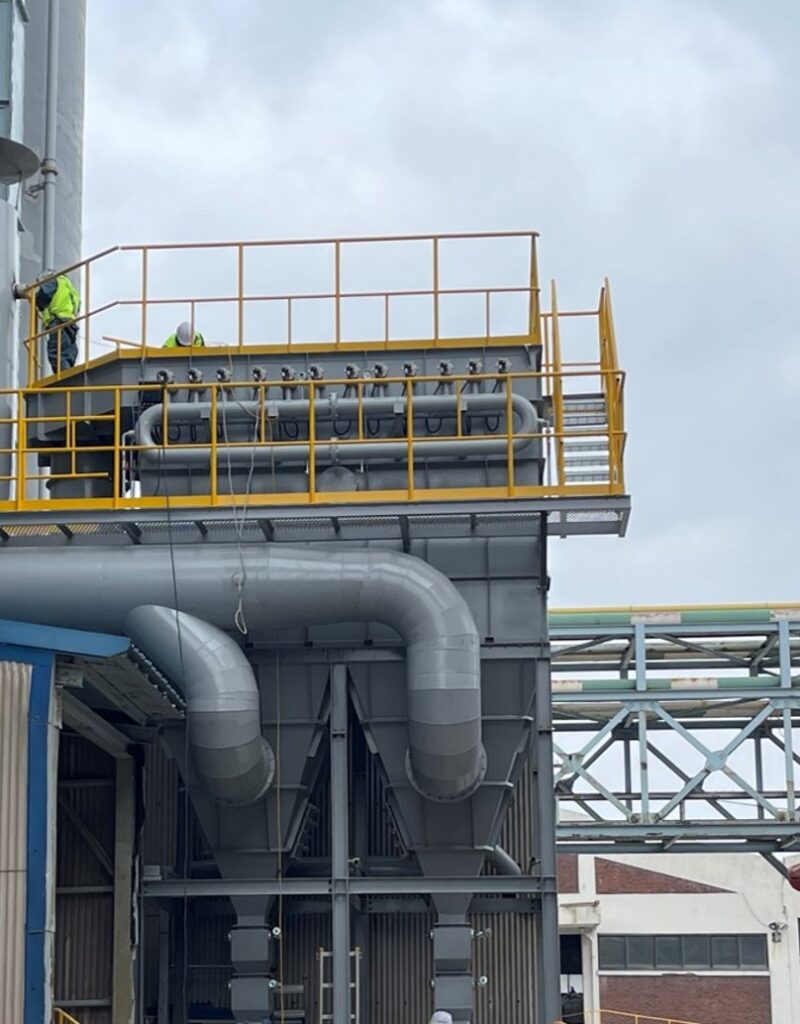Presenting a future-oriented vision through continuous research and efforts in the environmental industry
❚ Atmospheric Environment
■ Overview
When polluted gas passes through the filter(filtration fiber), the dust attaches to the filter by inertial collision with the fibers that make up the filter medium, direct blocking, diffusion, gravity, and electrostatic force, forming a bridge or an initial layer(first layer), and is collected
– Inertial collision: When the particle diameter (mass) of dust is large and there is sufficient inertial force, the dust collides with and attaches to the filter by inertia regardless of the divergence of the streamlines.
– Direct blocking: As particles become smaller and lighter, their inertia becomes relatively smaller and they approach the fiber along streamlines. As a result, they diverge and move like streamlines.
At this time, if the distance between the center of the dust and the fiber surface is shorter than the dust radius, the dust hits the fiber and attaches to the fiber.
– Diffusion: 99% of dust over 1 ㎛ is treated by inertial collision and direct blocking, and very small particles with a particle size of 0.1 ㎛ or less do not move along the streamlines. It is captured by diffusion through Brownian motion, that is, random motion.
■ Features
Filtered dust collection facilities completely remove even fine particles compared to centrifugal dust collection facilities and are widely and easily used.
It has the disadvantages of being more expensive to manufacture than a centrifugal force facility, being vulnerable to moisture, and being difficult to use at high temperatures, but it is widely used because it is an almost perfect facility for vibration control.
■ Application Field
1. Powder recovery device in the process of polishing
2. Wood and flour mills
3. Other DUST emission facilities such as silos
4. Batcher Plant
5. Battery

